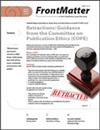Spiders feeding on vertebrates is more common and widespread than previously thought, geographically and taxonomically
IF 0.9
3区 农林科学
Q3 ENTOMOLOGY
引用次数: 4
Abstract
Abstract. According to a recent global literature survey, a total of 39 out of the 129 known spider families (∼30%) contain species capable of capturing vertebrate prey. The finding that the percentage of spider families engaged in vertebrate predation is so high is novel. Two groups of vertebrate-eating spiders are distinguished: “habitual vertebrate-eaters” vs. “occasional vertebrate-eaters”. The habitual vertebrate-eaters comprise ten spider families (Araneidae, Atracidae, Ctenidae, Lycosidae, Nephilidae, Pisauridae, Theraphosidae, Theridiidae, Trechaleidae, and Sparassidae) to which can be attributed 91% of all reported vertebrate predation incidents. The habitual vertebrate-eaters have evolved prey-capture adaptations such as (1) sufficient physical strength coupled with large body size, (2) the use of potent venoms, and (3) the use of highly efficient prey-catching webs. By contrast, unexpected feeding on vertebrates by the occasional vertebrate-eaters (i.e., Actinopodidae, Agelenidae, Amaurobiidae, Anyphaenidae, Barychelidae, Clubionidae, Corinnidae, Ctenizidae, Cyrtaucheniidae, Deinopidae, Desidae, Dipluridae, Eresidae, Filistatidae, Gnaphosidae, Haplonoproctidae, Linyphiidae, Liocranidae, Miturgidae, Oxyopidae, Pholcidae, Porrhothelidae, Salticidae, Selenopidae, Sicariidae, Sparassidae, Tetragnathidae, and Thomisidae) might be considered as chance events that took place when a tiny vertebrate crossed the path of an opportunistic spider. For a few families (e.g., Idiopidae) their status as habitual or occasional vertebrate predators is still unclear. In conclusion, our survey unveiled a large number of spider taxa previously not anticipated to feed on vertebrate prey. These findings improve our general understanding of spider feeding ecology and provide a first assessment of the significance of vertebrate prey as a food source for spiders.在地理和分类学上,以脊椎动物为食的蜘蛛比以前认为的更常见、更广泛
摘要根据最近的一项全球文献调查,在129个已知的蜘蛛科中,共有39个(~30%)含有能够捕捉脊椎动物猎物的物种。蜘蛛家族参与脊椎动物捕食的比例如此之高,这一发现是新颖的。食脊椎动物的蜘蛛有两类:“习惯性食脊椎动物”和“偶尔食脊椎动物”。习惯性脊椎动物进食者包括十个蜘蛛科(蛛科、Atracidae、Ctenidae、Lycosidae、Nephilidae、Pisauridae、Theraphoidae、Therididae、Trechaleidae和Sparassidae),占所有报告脊椎动物捕食事件的91%。习惯性脊椎动物已经进化出捕食适应能力,例如(1)足够的体力加上大的体型,(2)使用强效毒液,以及(3)使用高效的捕食网。相比之下偶尔吃脊椎动物的人以脊椎动物为食(即,放线足科、Agelindae、Amaurobidae、Anyphaenidae、Barychelidae、Clubionidae、Corinnidae、Ctenizidae、Cyrtaucheniidae、Deinopidae、Desidae、Dipuridae、Eresidae、Filistatidae、Gnaphosidae、Haplonosectidae、Linyphidae、Liocranidae、Miturgidae、Oxiopidae和Pholcidae、Porrothylidae、Salticidae、Selenopidae当一只微小的脊椎动物穿过一只机会性蜘蛛的路径时发生的偶然事件。对于一些科(例如,独蛛科)来说,它们作为习惯性或偶然性脊椎动物捕食者的地位仍然不清楚。总之,我们的调查揭示了大量以前预计不会以脊椎动物猎物为食的蜘蛛类群。这些发现提高了我们对蜘蛛捕食生态学的总体理解,并首次评估了脊椎动物猎物作为蜘蛛食物来源的重要性。
本文章由计算机程序翻译,如有差异,请以英文原文为准。
求助全文
约1分钟内获得全文
求助全文
来源期刊

Journal of Arachnology
生物-昆虫学
CiteScore
2.20
自引率
10.00%
发文量
34
审稿时长
>12 weeks
期刊介绍:
The Journal of Arachnology publishes scientific articles reporting novel and significant observations and data regarding any aspect of the biology of arachnid groups. Articles must be scientifically rigorous and report substantially new information.
 求助内容:
求助内容: 应助结果提醒方式:
应助结果提醒方式:


